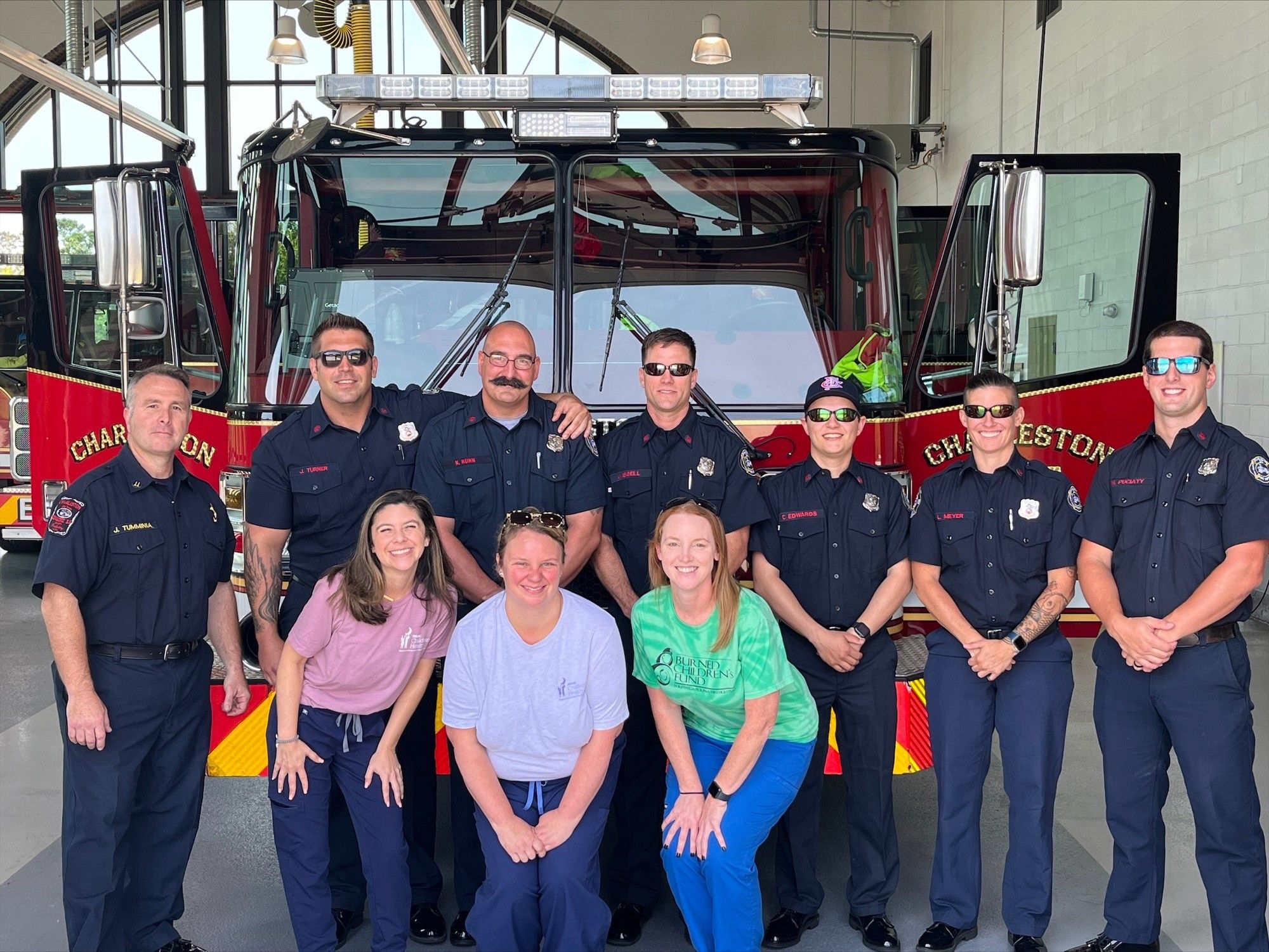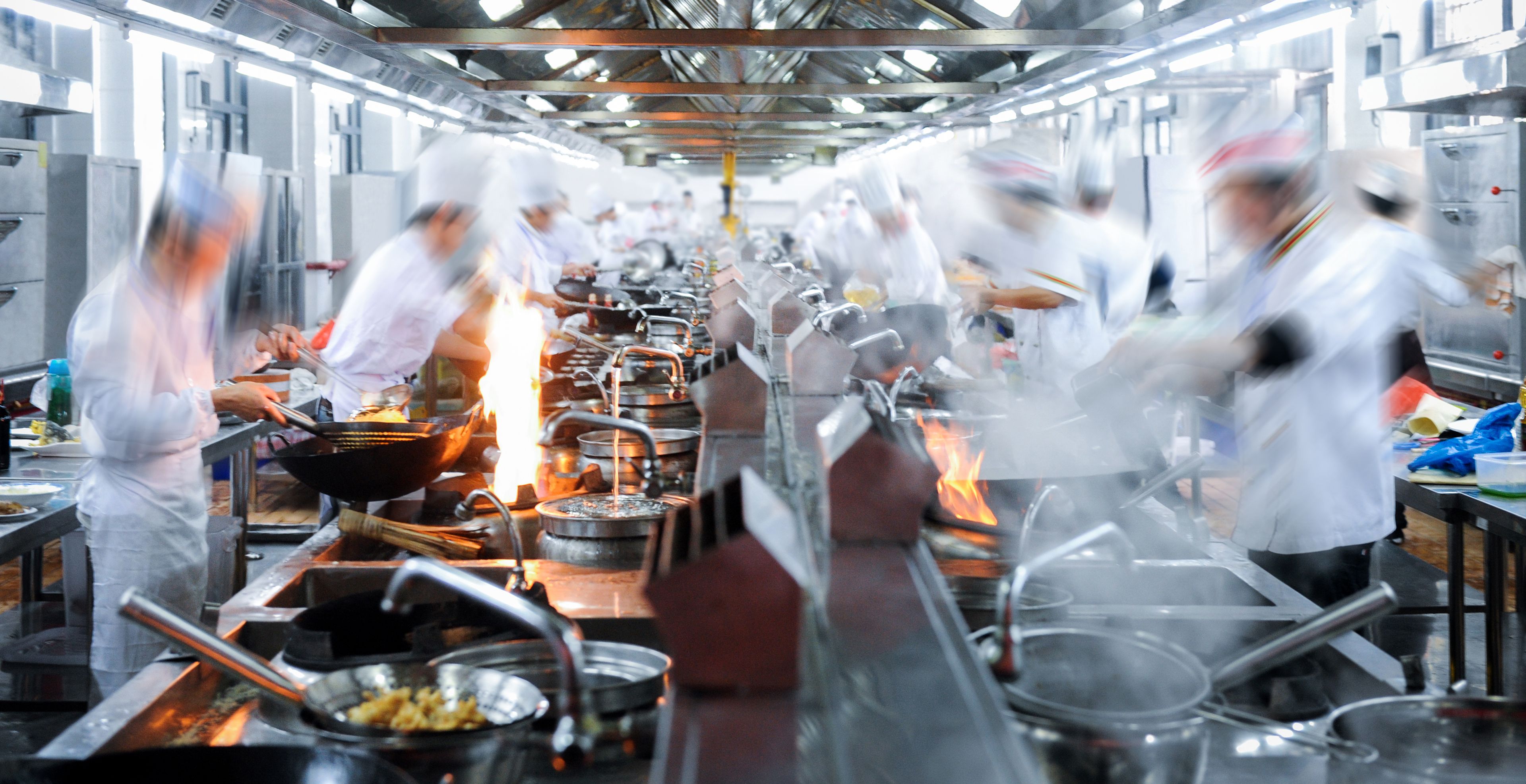
Prevention
National Burn Awareness Week 2026
Preventing Burns in the Workplace
Prevent burn injuries where they happen most—at work. Join ABA’s National Burn Awareness Week (#NBAW), February 1–7, 2026, and access exclusive tools to make your workplace safer.
Social Media Video AwardPoster ContestAll Resources
Workplace Safety Starts Here
Burn Prevention Activities Where You Work: Take Action Every Day
Burn risks exist in every workplace, from kitchens and offices to construction sites, fire stations, factories, farms, and military environments. Small, steady actions help reduce injuries and keep teams safe. Creating a burn-aware workplace doesn’t require significant changes. It starts with simple steps that build safer habits over time.

Use this checklist to strengthen burn prevention in your workplace:
Identify Hazards in Your Space
Spot burn risks where they happen, hot equipment, electrical panels, fuel storage, chemicals, and cooking areas. Address issues early.Review Safety Gear & PPE
Check that personal protective equipment is available, in good condition, and appropriate for the tasks at hand. Replace damaged gear promptly.Practice Emergency Procedures
Ensure exits are clear, alarms are working, and staff know what to do in the event of fires, chemical exposures, or equipment failures.Train Regularly
Conduct safety refreshers throughout the year so new and long-time team members understand burn risks and prevention steps.
Maintain Equipment & Work Areas
Service vehicles, tools, kitchen appliances, machinery, and heating devices regularly to prevent fires, overheating, or malfunctions.Stay Alert Around Heat Sources
Watch for hot surfaces, open flames, steam, engines, batteries, and high-temperature equipment. Simple awareness prevents accidents.Store Hazardous Materials Safely
Keep fuels, chemicals, gases, and flammables in approved containers with proper ventilation.Promote a Safety Culture
Encourage teams to speak up about hazards, report issues promptly, and model good burn-prevention habits.
Burn Prevention Where You Work: Full List of Tips
Burn risks exist in every workplace—from offices and restaurants to factories and farms. Taking simple, proactive steps can help prevent burns and keep everyone safe.
Discover practical burn prevention tips for your workplace. Small actions can make a big difference in ensuring workplace safety.

Click on a tab below to access the full list of burn prevention tips for each workplace area:
General Safety
Keep cooking surfaces clear and free of clutter; keep floors dry.
Use microwave-safe cookware and avoid placing metal in microwaves.
Wear Personal Protective Equipment (PPE) such as aprons, close-fitting sleeves, long pants, sturdy shoes, and oven mitts.
Remove grease and oil buildup from surfaces; know the location of fire extinguishers and the hood fire suppression pull station.
Keep first aid kits and fire extinguishers easily accessible.
Fryers
Monitor hot oil at all times and keep the area clear.
Handle oil only at room temperature and store it safely.
Remove ice or moisture before adding food, fill baskets no more than halfway
Raise and lower baskets gently to avoid splashes.
Ovens & Stoves
Use dry potholders or oven mitts.
Turn pot and pan handles inward and keep them off other burners.
Keep flames under pan bases; turn off burners when not in use.
Water & Steam
Avoid overfilling pots and don’t lean over boiling liquids.
Use tongs and open lids away from your face.
Release steam safely and keep lids nearby to prevent spills.
Personal Protective Equipment (PPE) & Gear
Wear full turnout gear, including helmet, hood, coat, pants, gloves, boots, and SCBA (Self-Contained Breathing Apparatus.)
Inspect gear before and after each call; repair or replace damaged PPE.
Ensure proper fit to avoid gaps.
Remove or cool PPE traps immediately if they trap heat.
Gear Saturation
Rotate crews to allow wet gear to dry
Wear base layers made of 100% cotton.
Decontamination
Clean gear thoroughly after fires to prevent skin exposure to toxic residues and reduce risk of chemical burns.
Situational Awareness
Work in teams and maintain contact.
Look for signs that a fire may suddenly spread: ceiling flames, extreme heat, or heavy smoke.
General Safety
Keep fire extinguishers, first aid kits, and exits visible; and ensure staff are trained to use them.
Conduct emergency drills regularly.
Breakroom & Kitchen
Set hot water ≤120°F (49°C).
Handle hot liquids carefully; test before contact.
Follow chemical safety sheets; wear PPE and maintain eyewash stations.
Monitor appliances while in use; store combustibles away from heat sources.
Desk & Work Space
Inspect cords, outlets, and devices; avoid plugging in too many at once.
Use heaters with auto shut-off and keep at least 3 feet from flammable materials.
Protect staff from direct sunlight and overheating near windows.
Industrial & Factory
Inspect tools and equipment; watch for frayed cords, fuel leaks, or overheating.
Use fire-resistant blankets or barriers during welding, grinding, or cutting.
Store fuels, gases, and chemicals properly, ensuring adequate ventilation.
Ensure machines are powered down and locked out before servicing
Wear correct PPE and replace damaged gear promptly.
Transportation
Service vehicles, aircraft, and boats regularly to prevent fuel or electrical fires.
Store flammable liquids in approved containers and avoid smoking near fuel.
Handle batteries and lithium-ion devices safely; charge on nonflammable surfaces.
Monitor batteries for overheating or swelling; store in cool, dry places.
Respond to engine fires by pulling over, shutting off the engine, and evacuating immediately.
Military
Identify burn risks in training and operational settings, including fuels, vehicles, machinery, and explosives.
Handle fuels, waste, and chemicals safely; dispose of and decontaminate properly.
Maintain protective gear and enforce strict safety protocols during exercises.
Construction
Wear flame-resistant, arc-rated, or insulated clothing as appropriate.
Inspect tools and cords regularly; maintain proper ventilation when using generators.
Use barriers during hot work such as welding, grinding, or cutting.
Store flammable materials safely and report electrical hazards immediately.
Protect feet and skin when working with cement, solvents, or other irritants.
Laborers
Stay alert to hot machinery, exhaust, and heated surfaces.
Wear gloves, sleeves, and eye protection; avoid wearing gas-soiled clothing indoors.
Apply sunscreen and wear protective clothing to prevent sunburn and heat illness.
Know basic burn first aid: cool the burn, cover it, and seek medical help.
Mechanics
Allow engines and exhaust systems to cool before working.
Wear goggles and gloves when handling fuel, coolant, or batteries.
Use approved fuel containers and never smoke near flammable liquids.
Prevent sparks by dispensing fuels on the ground, not inside vehicles.
Agriculture
Shut off and cool engines before refueling.
Shield hot equipment parts and label them clearly.
Wear PPE when handling fertilizers, pesticides, or acids.
Avoid welding or open flames during high fire-risk periods.
Maintain distance from power lines and electrical hazards during harvest.
General Safety
Keep cooking surfaces clear and free of clutter; keep floors dry.
Use microwave-safe cookware and avoid placing metal in microwaves.
Wear Personal Protective Equipment (PPE) such as aprons, close-fitting sleeves, long pants, sturdy shoes, and oven mitts.
Remove grease and oil buildup from surfaces; know the location of fire extinguishers and the hood fire suppression pull station.
Keep first aid kits and fire extinguishers easily accessible.
Fryers
Monitor hot oil at all times and keep the area clear.
Handle oil only at room temperature and store it safely.
Remove ice or moisture before adding food, fill baskets no more than halfway
Raise and lower baskets gently to avoid splashes.
Ovens & Stoves
Use dry potholders or oven mitts.
Turn pot and pan handles inward and keep them off other burners.
Keep flames under pan bases; turn off burners when not in use.
Water & Steam
Avoid overfilling pots and don’t lean over boiling liquids.
Use tongs and open lids away from your face.
Release steam safely and keep lids nearby to prevent spills.
Personal Protective Equipment (PPE) & Gear
Wear full turnout gear, including helmet, hood, coat, pants, gloves, boots, and SCBA (Self-Contained Breathing Apparatus.)
Inspect gear before and after each call; repair or replace damaged PPE.
Ensure proper fit to avoid gaps.
Remove or cool PPE traps immediately if they trap heat.
Gear Saturation
Rotate crews to allow wet gear to dry
Wear base layers made of 100% cotton.
Decontamination
Clean gear thoroughly after fires to prevent skin exposure to toxic residues and reduce risk of chemical burns.
Situational Awareness
Work in teams and maintain contact.
Look for signs that a fire may suddenly spread: ceiling flames, extreme heat, or heavy smoke.
General Safety
Keep fire extinguishers, first aid kits, and exits visible; and ensure staff are trained to use them.
Conduct emergency drills regularly.
Breakroom & Kitchen
Set hot water ≤120°F (49°C).
Handle hot liquids carefully; test before contact.
Follow chemical safety sheets; wear PPE and maintain eyewash stations.
Monitor appliances while in use; store combustibles away from heat sources.
Desk & Work Space
Inspect cords, outlets, and devices; avoid plugging in too many at once.
Use heaters with auto shut-off and keep at least 3 feet from flammable materials.
Protect staff from direct sunlight and overheating near windows.
Industrial & Factory
Inspect tools and equipment; watch for frayed cords, fuel leaks, or overheating.
Use fire-resistant blankets or barriers during welding, grinding, or cutting.
Store fuels, gases, and chemicals properly, ensuring adequate ventilation.
Ensure machines are powered down and locked out before servicing
Wear correct PPE and replace damaged gear promptly.
Transportation
Service vehicles, aircraft, and boats regularly to prevent fuel or electrical fires.
Store flammable liquids in approved containers and avoid smoking near fuel.
Handle batteries and lithium-ion devices safely; charge on nonflammable surfaces.
Monitor batteries for overheating or swelling; store in cool, dry places.
Respond to engine fires by pulling over, shutting off the engine, and evacuating immediately.
Military
Identify burn risks in training and operational settings, including fuels, vehicles, machinery, and explosives.
Handle fuels, waste, and chemicals safely; dispose of and decontaminate properly.
Maintain protective gear and enforce strict safety protocols during exercises.
Construction
Wear flame-resistant, arc-rated, or insulated clothing as appropriate.
Inspect tools and cords regularly; maintain proper ventilation when using generators.
Use barriers during hot work such as welding, grinding, or cutting.
Store flammable materials safely and report electrical hazards immediately.
Protect feet and skin when working with cement, solvents, or other irritants.
Laborers
Stay alert to hot machinery, exhaust, and heated surfaces.
Wear gloves, sleeves, and eye protection; avoid wearing gas-soiled clothing indoors.
Apply sunscreen and wear protective clothing to prevent sunburn and heat illness.
Know basic burn first aid: cool the burn, cover it, and seek medical help.
Mechanics
Allow engines and exhaust systems to cool before working.
Wear goggles and gloves when handling fuel, coolant, or batteries.
Use approved fuel containers and never smoke near flammable liquids.
Prevent sparks by dispensing fuels on the ground, not inside vehicles.
Agriculture
Shut off and cool engines before refueling.
Shield hot equipment parts and label them clearly.
Wear PPE when handling fertilizers, pesticides, or acids.
Avoid welding or open flames during high fire-risk periods.
Maintain distance from power lines and electrical hazards during harvest.

